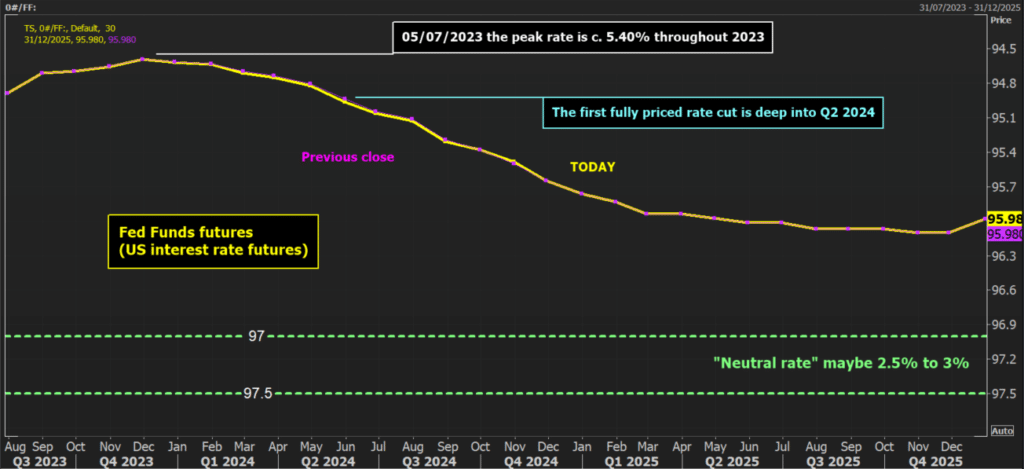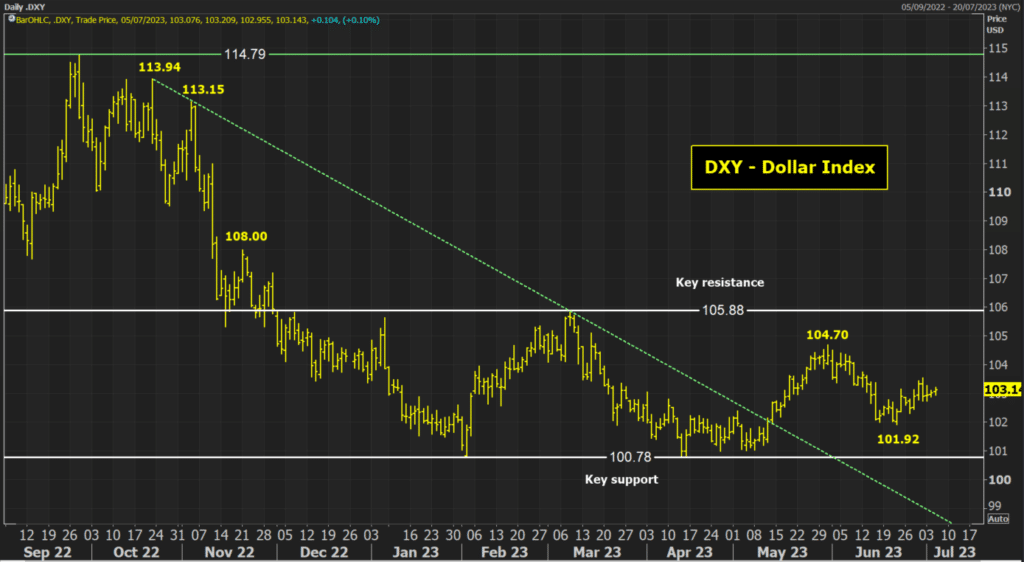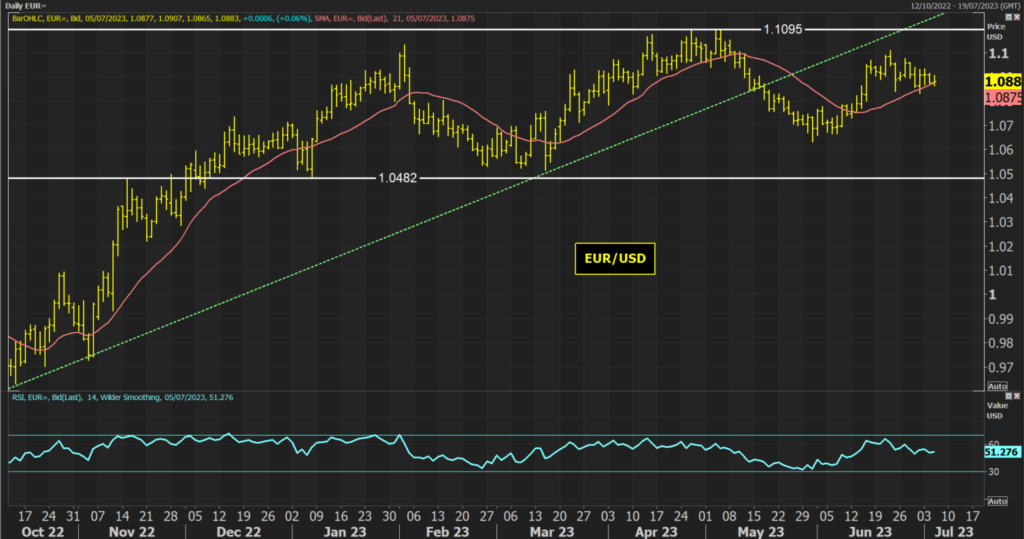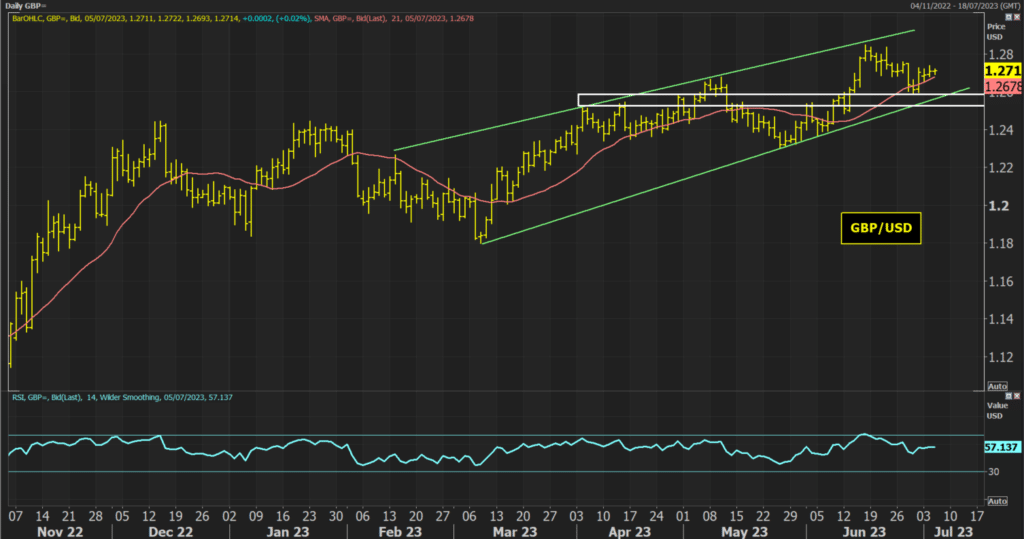As US traders wearily return to their desks following their Independence Day celebrations there is a sense that consolidation is developing across USD major forex pairs. Views are becoming set that the Fed still has a likely one more rate hike to come this year before a prolonged pause. But if traders are settled in this opinion, what could change these views? The economic data in the coming weeks could be all important.
- There is little on the calendar to shift the Fed from a likely rate hike in July
- However, trends in inflation and the labour market data remain key in the coming months
- With USD pairs hitting the buffers, range trading strategies come to the fore

Markets are settled in their views on the FOMC
In the wake of the Fed’s “hawkish hold” in June, there has been a concerted effort by Fed Chair Powell to guide markets to the conviction that at least one more rate hike is coming. Not only that, and perhaps more pertinent, is that the Fed rate cuts will not be coming for several months into 2024.
There are two key questions for markets to grapple with in the coming weeks/months:
- How high will rates go?
- When will the rate cuts begin?
Today’s FOMC minutes may provide a little further detail on the views surrounding how to deal with core inflation which is still proving to be stubborn and the need to keep rates higher for longer.
Following Fed Chair Powell’s appearances before the Congressional Committees there has been little significant move on rate hike expectations. However, the first prospective rate cuts have been moved out from Q1 2024 to deep into Q2 2024. Here is the curve of the Fed Funds Futures:

The first rate cut may not be until May or June next year. Let’s keep in mind that one more 25 basis points rate hike is expected in the coming meetings. According to the CME Group FedWatch tool we are looking at around an 88% probability of the hike in July, rising to over 90% for September and November. From previous rate cycles, the historic average length of time it takes from the final rate hike until the first rate cut is around six months. That would suggest that markets are fairly in line with their views with the likely timings.
The data needs to be watched
So markets are fairly settled in these views currently. But what could change them? I will be watching the data on inflation and the labour market for clues. Before the FOMC on 26th July there is the CPI and several labour market indicators. Core inflation is dropping back, albeit gradually and not as fast as central bank officials would like. Markets know this. It is being reflected in economies around the world. However, lower US inflation could impact the outlook for prospective rate cuts.
For now, the labour market remains sturdy, at least according to the headline Nonfarm Payrolls jobs growth. But the payrolls report for May suggested that there were some anomalies, with a big jump in unemployment despite the strong jobs growth. This is something that I will be keeping an eye on in the coming days. If the ISM Services data for employment reflect the slowdown that was in the ISM Manufacturing on Monday, it could suggest that the labour market is beginning to creak. Once more, this could start to impact the outlook for tightening and cuts.
Weaker US data may drag on US rates expectations and perhaps even start to drag back on the USD rebound that we have seen in the past couple of weeks. The Dollar Index has been ticking higher from the June low of 101.92. This has settled the index into a medium-term trading range between 100.78/105.88.

Ranging USD pairs, for now
The development of this range on the Dollar Index is reflected across several of the major pairs. EUR/USD and GBP/USD have had their rallies curbed in the past couple of weeks.
EUR/USD is for all intents and purposes the mirror image of the Dollar Index and has settled into a medium-term range between 1.0482/1.1095. With technical indicators such as the RSI very much in neutral configuration, markets are very much in wait-and-see mode now. Looking at the key resistance in place, it would take a significant shift in Fed expectations (on weaker US data) to drive a weaker USD and an upside break on EUR/USD.

However, the one I am interested in is GBP/USD. Cable is slightly more bullish still than EUR/USD. There is an uptrend channel over the past four months, with breakout support between 1.2525/1.2590. The recent USD rebound has dragged the pair back to leave important resistance now at 1.2848. These will be the important levels to watch for the Nonfarm Payrolls report this week and CPI next week. If there is any sign of weaker US data that drives a reassessment of Fed rate expectations (either less chance of a July hike or pulling forward rate cuts), then a breakout above 1.2848 is likely.
